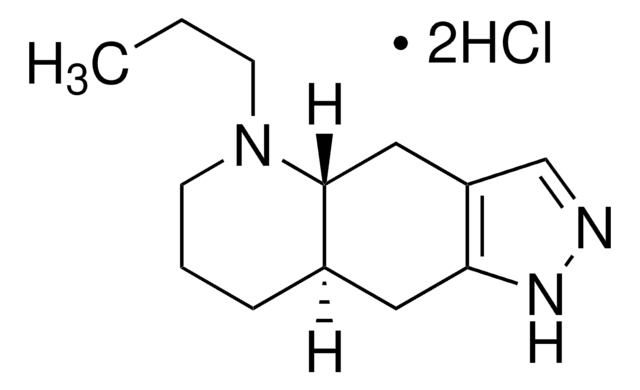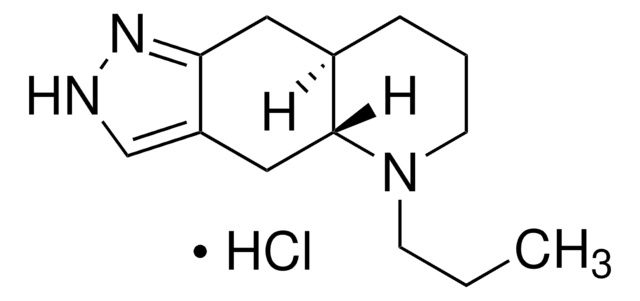S3256
Spermine
≥97%
Synonym(s):
N,N′-Bis(3-aminopropyl)-1,4-diaminobutane, Gerontine, Musculamine, Neuridine
About This Item
Recommended Products
biological source
microbial
synthetic
Quality Level
description
form: solid or semisolid
assay
≥97%
bp
150 °C/5 mmHg (lit.)
mp
28-30 (lit.)
solubility
water: 50 mg/mL, clear, colorless
storage temp.
2-8°C
SMILES string
[H]N(CCCN)CCCCN([H])CCCN
InChI
1S/C10H26N4/c11-5-3-9-13-7-1-2-8-14-10-4-6-12/h13-14H,1-12H2
InChI key
PFNFFQXMRSDOHW-UHFFFAOYSA-N
Gene Information
human ... GRIN2B(2904)
rat ... Grin2a(24409)
Looking for similar products? Visit Product Comparison Guide
General description
Application
- as an inositol 1,4,5-trisphosphate receptor (IP3R)/glucose-regulated protein 75 (Grp75)/voltage-dependent anion channel 1 (VDAC1)/mitochondrial calcium uniporter (MCU) agonist to activate MCU in mouse podocytes
- in the biolistic transfection of filarial parasites
- for the production of adeno-associated virus (AAV)
Biochem/physiol Actions
signalword
Danger
hcodes
Hazard Classifications
Eye Dam. 1 - Skin Corr. 1B
Storage Class
8A - Combustible corrosive hazardous materials
wgk_germany
WGK 3
flash_point_f
Not applicable
flash_point_c
Not applicable
ppe
Eyeshields, Faceshields, Gloves, type P3 (EN 143) respirator cartridges
Certificates of Analysis (COA)
Search for Certificates of Analysis (COA) by entering the products Lot/Batch Number. Lot and Batch Numbers can be found on a product’s label following the words ‘Lot’ or ‘Batch’.
Already Own This Product?
Find documentation for the products that you have recently purchased in the Document Library.
Customers Also Viewed
Articles
Nitric oxide (NO) as a signal transporter in neurons, endothelial cells and in the immune system.
Protocols
HPLC Analysis of Biogenic Amines on Ascentis® RP-Amide
Our team of scientists has experience in all areas of research including Life Science, Material Science, Chemical Synthesis, Chromatography, Analytical and many others.
Contact Technical Service







